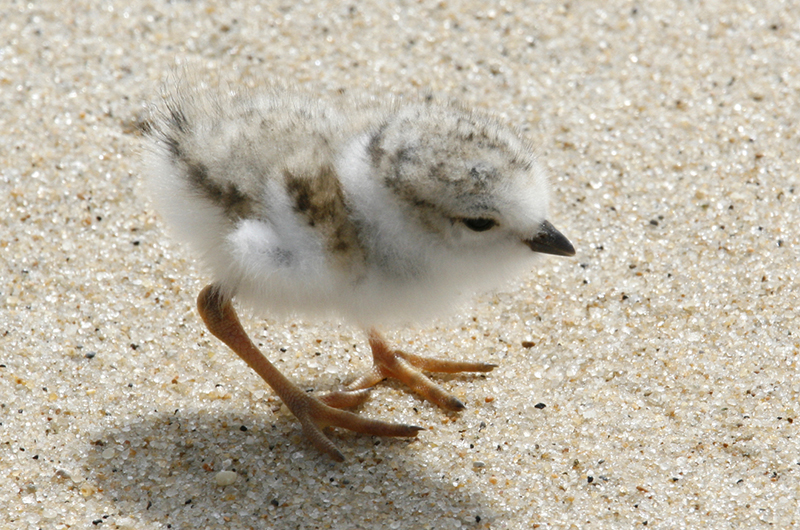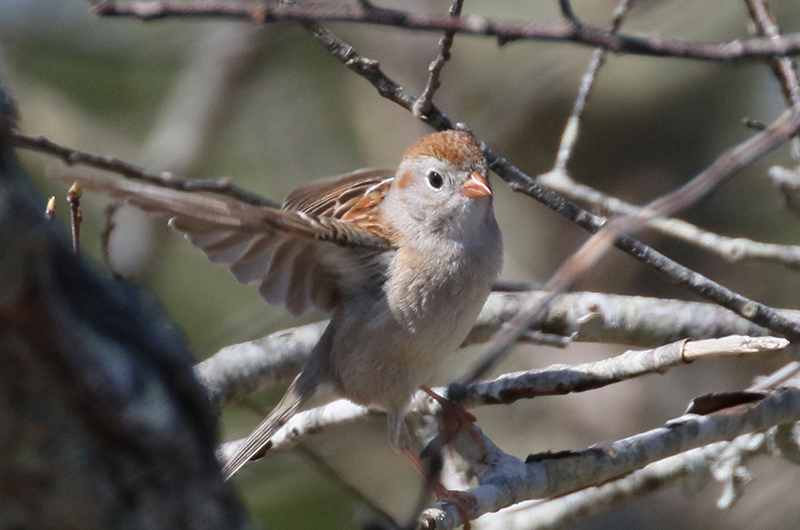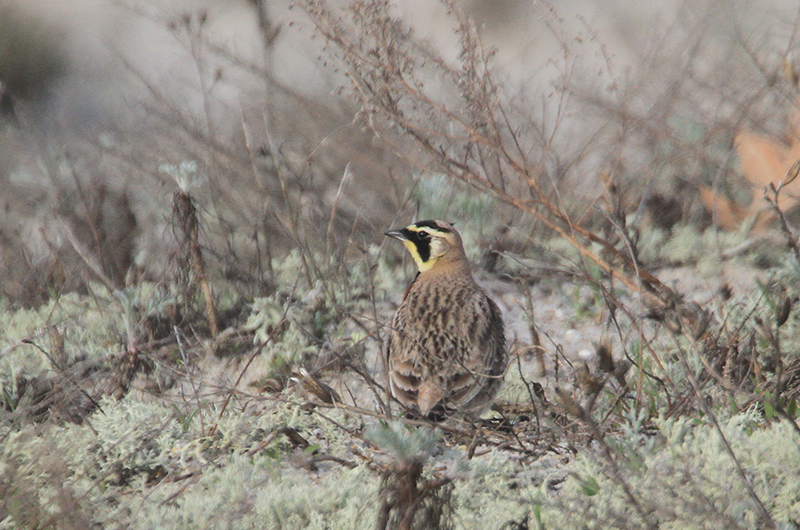Warm weather has finally come our way, and many of our thoughts turn to beaches. My thoughts often turn to how to protect the birds that are busy nesting there bringing the next generation into the world. That is what birds do in June.
American oystercatcher, piping plover, great black-backed and herring gull chicks are now hatching. These baby birds are precocial, covered in down and able to run around within hours of hatching. They might stay in their nest for the first night, especially if some of their brothers and sisters are still hatching. These baby birds, especially the plovers, look like cotton balls on toothpicks. And they do run fast.
Organizations like BiodiversityWorks, Trustees of Reservations, Martha’s Vineyard Land Bank Commission, Felix Neck, and Sheriff’s Meadow Foundation are now busy locating and monitoring the nesting birds. Your cooperation is essential. Please stay out of the areas that are posted and roped off. Most of the beach is still available for your use. We need to share the beach. avoid roped off areas so the chicks hatching now will fledge (be able to fly) by around the Fourth of July.
Every year nests are lost to natural causes like storm waves that wash nests away and predators that consume eggs or chicks. Human disturbance causes additional mortality because parent birds are chased off their nest. The unprotected eggs can easily overheat on sunny days, or get too chilled during cold wet weather, or get gobbled up by opportunistic predators that take advantage of disturbance. Remember that birds losing their first nesting attempt will renest, and that nesting attempt will last later into the summer season.
Your excellent cooperation in past years is why piping plovers have increased in Massachusetts, from 128 pairs in 1986 to about 700 pairs last year. Keep up the good work!
Bird Sightings
The most exciting sighting of the week is the adult pomarine jaeger that Cynthia McGrath photographed as it sat on the beach at Shear Pen Pond on Cape Pogue on June 3. These incredibly stocky seabirds do not come to shore very often, so this sighting is unusual. They can be seen offshore at just about any time of the year although sightings are more frequent in the fall.
A sandhill crane is still hanging around along the south shore from Edgartown to Chilmark. This bird appears to be fairly tame, unusual for a bird standing three to four feet tall. Victoria Riskin reports two visits near Watcha Pond — the most recent was on June 7 when she photographed the bird from
several yards away as it stood on her deck and appeared to be examining its reflection in a sliding door. “The bird was remarkably unperturbed by me as I circled around her with my camera,” she wrote
That same day there were two other sightings: Alex Friedman also saw it on nearby Oyster Pond while Alan Ganopol saw it near a house in the Coffin’s Field subdivision. Rose Leitner spotted it at the Katama Farm on June 3, and Susan Whiting saw it near a house in Quenames on June 2. This tame bird really gets around!
The first red knot — a shorebird — of the season finally showed up. Allan Keith spotted it on Norton Point on June 2, along with 12 black-bellied plover, an amazing flock of more than 300 ruddy turnstones, 250 sanderling, 12 dunlin, 1 least sandpiper, and two semipalmated sandpipers.
Other sightings of migrants include a yellow-billed cuckoo near Great Rock Bight on June 1, observed by Susan Whiting, Pat Hughes and Hal Minis. Also on June 1, Allan Keith observed a late blue-gray gnatcatcher at Menemsha
Hills and a blackpoll at Squibnocket on June 2. This latter species is one of the last northbound migrant warblers. The lingering long-tailed duck was seen again this week, this time by Hans Goeckel on Cape Pogue on June 5. And Bob Shriber spotted three laughing gulls on Norton Point on June 2, while Jeff Peters spotted a laughing gull in Vineyard Haven harbor on June 7. He also spotted a fish crow along the edge of the harbor.
The remainder of this column details sightings of behaviors that confirm a species is nesting here. Watching their behavior is entertaining and informative.
Most of us have Carolina wrens nesting in our yards. Deb Orazem notes that her wrens bring food to four nestlings every 70 seconds, and that they spend only seven seconds at the nest. Busy birds. Sioux Eagle, Tom Hodgson and Wendy Palmer also report nesting wrens. On June 6 at Cedar Tree Neck I watched a bank swallow visiting a nesting cavity every two or three minutes.
Heather Rynd has been watching a mother cardinal feeding young in their nest. Allan Keith has a nesting phoebe and a family of red tailed hawks with young about three fourths grown. On June 3 at Great Rock Bight he observed a hairy woodpecker feeding chicks in a tree cavity at Great Rock Bight. And Francesca Zeta has been watching a black-capped chickadee carrying small insects into a West Tisbury nest box.
Hans Goeckel observed horned larks on Norton Point on June 4, as did Bob Shriber on June 2. Matt Pelikan and Wendy Culbert observed a pair of them on Cape Pogue on June 7. And every year I find a couple of pairs of larks nesting on the Oak Bluffs side of State Beach near the big bridge.
Jessica Burnham spotted a pair of black ducks in Lagoon Pond on June 5.
Robert Culbert is an ecological consultant with Nature Watch LLC living in Vineyard Haven.










Comments
Comment policy »